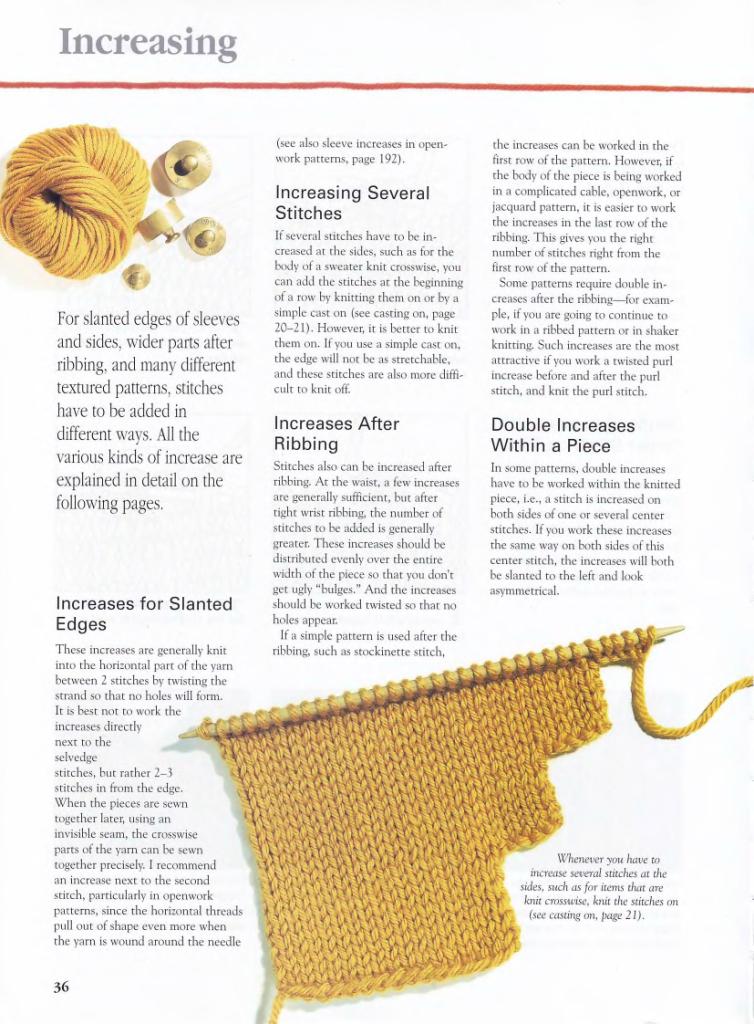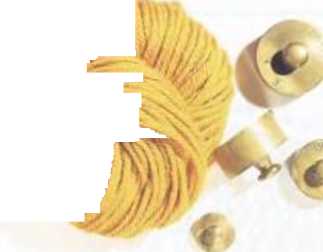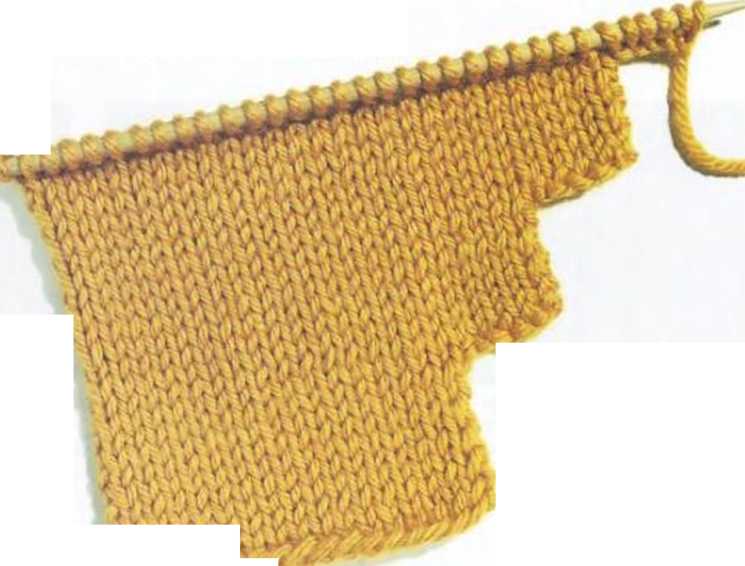036

Increasing


\Y7iene»vr you have u> inerease set er ul stitches at tl le sides, such as for items tłu u are knit cmuu i.v. knit tlw stitches on (see casting on, pag; 21).
For slanted edges of sleeves and sides, wider parts after ribhing. and many different textured pattems, stitches have to be added in different ways. Ali the various kinds of increa.se are explained in detail on the following pages.
Increases for Slanted Edges
These increases are generally knit inn> the horteuntal |virt of the yurn betwecn 2 stitches by rwisting the strand so thal nu hokis will form. lt is besr not r«• work the increases directly next ro rhe schcdge
stitches, but rather 2-) stitches in from the edge.
When the pteces are sewn together latcr, using an ineisible seam, the crosswise parts of the yam can he sewn together predsely. I recommend an inerease ncxt to the second stitch, particularly in openwork pattems. stnee rhe horuontal thrctuls puli out of shape evcn morę when rhe yam is wound around rhe needlc
(sec also >lccve increases in openwork pattems. pnge 192).
Increasing Several Stitches
lf sevcral stitches havc to bc in* creased at the sides. such as for the body oł a swcater knit crosswisc, you can add the stitches ar the beginning oi a row by knitting them on or by a simplc cast on (see casting on, page 20-21). Howcver, it is better to knit them on. Il you use a simple cast on. the edge will not be as strctchnblc, and these sutehes are afeo morę ditii-cult to knit oft.
Increases After Ribbing
Stitches also can bc inereased after ribbing. Ar rhe waist. a (cw increases are generally sufficicnt, but after tight wrist nbbing. rhe numkr t>f stitches to bc added is gcncrally greater. These increases should k distribatcd eeenly over the en tire width of the piece so that you don’t get ugly “bulges." And the increases should be worked twisted so that no holes appear.
lf a simple pattern is used after the ritibinfe luch as stockinettc stitch, the increases can be worked in the iirst row of the patt ern. However, if the kidy of the piece is bemg worked in a complicated cable, openwork. or jacquard pattern. ir is easier to work rhe increases in rhe lasr row of the ribbing. This gives vou the rtgłu mimhcr of stitches right from rhe iirst row of the pattern.
Sonie pattems rcquire double in* creascs after the ribbing—for e.vam-ple, it you are going ro continuc to work m a ribkd pattern or in shaker knirnng. Such increases are rhe most attractive if you work, a twisted purl inerease before and after rhe purl stitch, and knit the purl stitch.
Double Increases Within a Piece
In sonie pattems, double increases havc to be worked within the knirted piece, i.c., u stitch is inereased on borh sides i>t one or seecral center stitches. lf you work these increases rhe same way on borh sides of this center stitch, the increases will lxnh k- slanted ro rhe left and look asymmctrical.
36
Wyszukiwarka
Podobne podstrony:
Windows Server 03 Enterprise?ition 2009 12 01 22 10 23 Completing the Configure a DNS Se^er Wizarcl
56572 musc dev049 Ho w the Muscles Increase in Size Sr If you have had nny experience with exerrisin
Polo Collars Enlargod view of the increases. In order for the collar to be fuli cnough, you have to
E We~take the stress out of organising events. Ali you have to do is:o © © set the
helpdesk [ Submit ][ Reset ] Your Name: Email: Regarding: Comment or Question: If you have
image004 SOMETIMES YOU HAVE TO FIGHT FIRE WITH FIRE. THE YEAR IS 2032. AND SOMETIMES IS NOW. In 1996
ZSBD 3 C:Program FilesMicrosoft SQL ServerMSSQLLog SQL Server Enterprise Manager After you have crea
ilienvault■ creators of ossirr7 Troubleshooting 7.1 How to check if you have a connection with the W
Step 2. Add Employees Into ISNetworld ► If you have a large number of employees to
więcej podobnych podstron